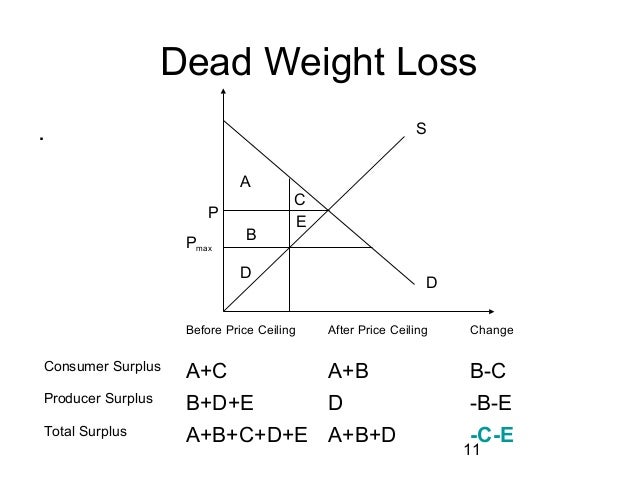Some producer surplus is transferred to the consumers.
Consumer surplus lost due to price floor.
Consumer surplus is an economic measurement to calculate the benefit i e surplus of what consumers are willing to pay for a good or service versus its market price.
Dead weight loss is transferred to producers and consumers.
However price floor has some adverse effects on the market.
Equilibrium demand 500.
The lower price means suppliers get less for their good so their producer surplus decreases by the area c the same as the increase in consumer surplus.
Minimum wage and price floors.
Dead weight loss is the loss of consumer or producer surplus due to an intervention.
Government enforce price floor to oblige consumer to pay certain minimum amount to the producers.
Price floor is enforced with an only intention of assisting producers.
Since the price has decreased the consumer surplus increases by the area c.
Tax incidence and deadweight loss.
Price ceilings and price floors.
A deadweight welfare loss occurs whenever there is a difference between the price the marginal demander is willing to pay and the equilibrium price.
Consumer surplus always decreases when a binding price floor is instituted in a market above the equilibrium price.
Price and quantity controls.
The theory explains that spending behavior varies with the preferences of individuals.
Tutorial on how the impact of price floors and price ceilings.
Some consumer surplus is transferred to the producers.
Effect of price floor.
Consumer surplus is the consumer s gain from an exchange.
The deadweight welfare loss is the loss of consumer and producer surplus.
Government set price floor when it believes that the producers are receiving unfair amount.
The consumer surplus is the area below the demand curve but above the equilibrium price and up to the quantity.
The total economic surplus equals the sum of the consumer and producer surpluses.
Price floors cause a deadweight welfare loss.
Consumer surplus will only increase as long as the benefit from the lower price exceeds the costs from the resulting shortage.
Deadweight loss is explained also.
In addition regarding consumer and producer surplus.
How price controls reallocate surplus.
Equilibrium price 5.
Consumer and producer surplus is transferred to the government.
The consumer surplus formula is based on an economic theory of marginal utility.
If government implements a price floor there is a surplus in the market the consumer surplus shrinks and inefficiency produces deadweight loss.
If the government establishes a price ceiling a shortage results which also causes the producer surplus to shrink and results in inefficiency called deadweight loss.
This is the currently selected item.
At equilibrium the price would be 5 with a quantity demand of 500.

